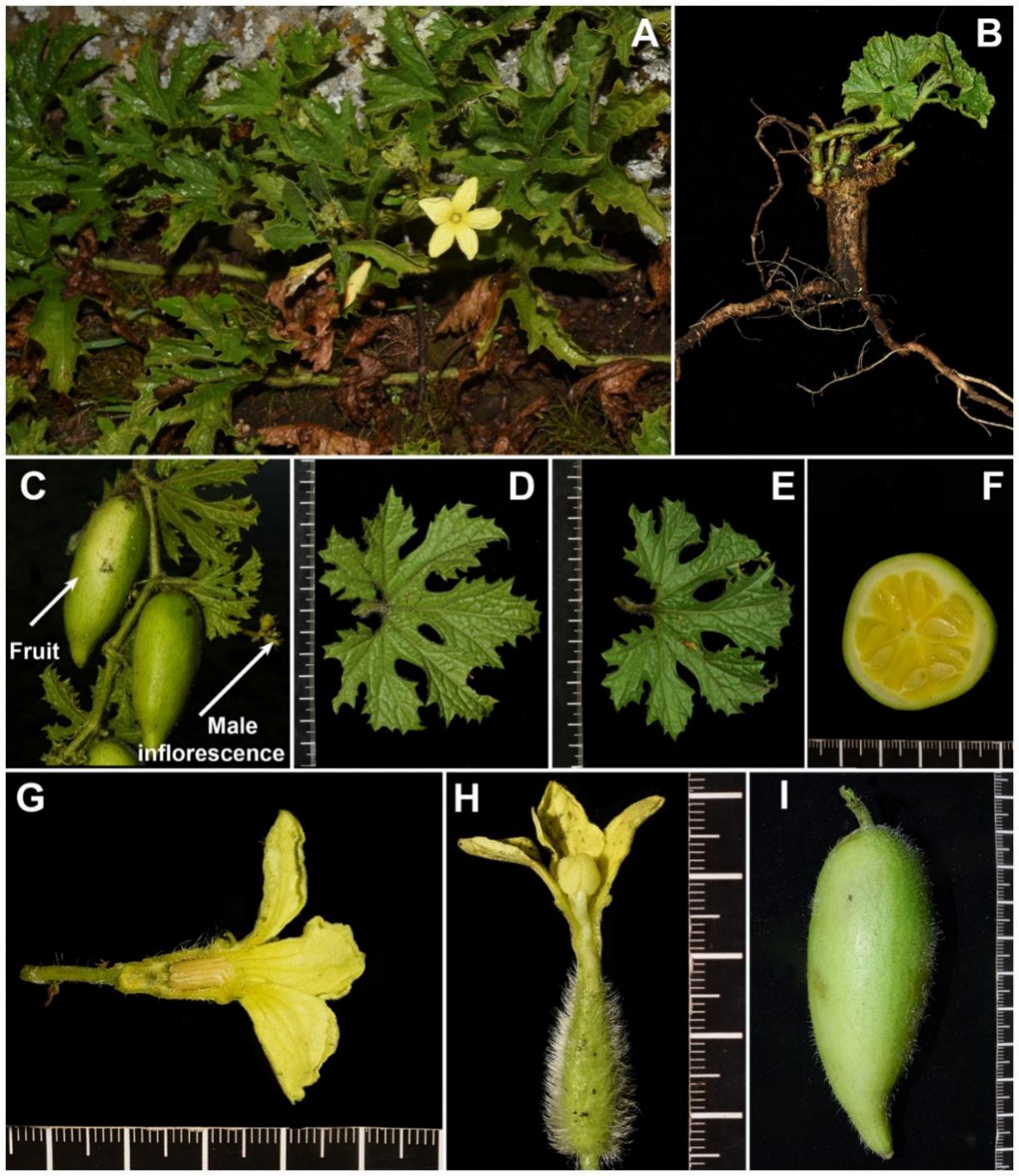
Peponium is a genus of tribe Benincaseae in family Cucurbitaceae and its main distribution includes African tropics and Madagascar. The shared features of Peponium are palmately lobed leaf blades, unequally bifid tendrils, synantherous stamens, solitary female flowers, and pubescent or papillose petals. Peponium is either monoecious or dioecious. All five known species in east Africa are dioecious, whereas the new species of the genus found in Mount Elgon is monoecious.
During a field investigation by Sino-Africa Joint Investigation Team (SAJIT) at Mount Elgon in Kenya, WEI Neng and his colleagues from the research group of Flora and Plant taxonomy in Eastern Africa of the Wuhan Botanical Garden found two clusters of Peponium on a moist exposed steep cliff.
The researchers were attracted by its monoecious feature, since all the known species of Peponium in eastern Africa are dioecious. After comparison with other specimens of Peponium, the plant was found morphologically most similar to P. cienkowskii and P. vogelii, but with longer ovaries.
To determine the systematic position of the plants, researchers selected four species of Peponium and two species of Lagenaria as the inner and outer groups, respectively, and constructed a phylogenetic tree based on nuclear ITS region and five chloroplast regions (trnL–F, rpl20–rps12, matK, rbcL, and trnL intron).
According to the tree, Peponium was well supported to be monophyletic, but the relationships of each species were unsolved. Nevertheless, current morphological and molecular phylogenetic evidence still supported it as a new species, as it was discovered in Mount Elgon, it was named Peponium elgonense N.Wei, G.W.Hu & Q.F.Wang.
Peponium elgonense is a herbaceous vine, 1–3 m long, its leaves are simple, palmately lobed, base cordate; its tendrils are unequally bifid; It is monoecious, with male inflorescence and female flower coaxillary. The peduncle of male inflorescence is longer than pedicel of female flower, holding male flowers above solitary female flower. And its ovary is ovate-fusiform with densely white villus.
Peponium elgonense is morphologically similar to P. cienkowskii and P. vogelii, apart from its dioecism and longer ovary mentioned above, its bract size, corolla lobes and stigma shape are also slightly different from those of the other two species.
The results were published on Phytotaxa, an international journal of plant taxonomy, titled "Peponium elgonense (Cucurbitaceae), a new species from Mount Elgon in Kenya".

Peponium elgonense. A. Growth habit in the wild. B. Root. C. Fruit and male inflorescence on the same individual. D. Abaxial view of leaf. E. Adaxial view of leaf. F. Cross-section of fruit. G. Male flower. H. Female flower. I. Unripe fruit (Image by WEI Neng)

86-10-68597521 (day)
86-10-68597289 (night)

52 Sanlihe Rd., Xicheng District,
Beijing, China (100864)

